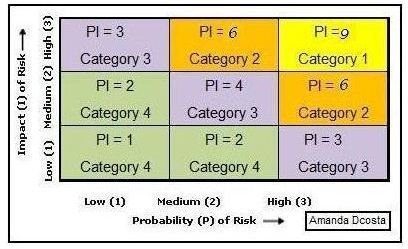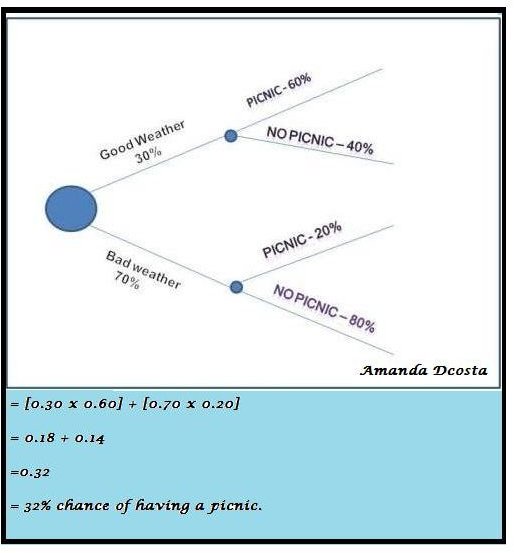Risk Assessment Methods in Project Management
Why Risk Assessment?
Risk assessment has become an integral part of the risk management process. In fact, a project cannot be approved for execution unless a thorough assessment of risks has been done. While the methodology remains the same, the types of risks will vary a great deal in terms of seriousness, frequency and impact. A few risk assessment methods are highlighted here to give the reader an understanding of the risk assessment procedure.
[caption id=“attachment_133133” align=“aligncenter” width=“640”] Don’t let project risks sneak up on you…[/caption]
Don’t let project risks sneak up on you…[/caption]
Risk identification
Risk identification is the process that leads to risk assessment. Without proper identification of risks, project risks cannot be assessed and reports related to it generated. Hence, by using many techniques like the SWOT Analysis, PESTLE Analysis, Delphi technique, Interviewing, Brainstorming, etc, a major proportion of project risks are identified. While not all of them may be serious, there are those which can make a huge impact on the project’s functioning and result. Hence, this identification leads to the process of risk assessment, where risks are assessed for their probability and impact.
Risk Assessment 1: Qualitative Analysis
Qualitative analysis is one of several risk assessment methods of analyzing the seriousness of a risk. There are two approaches to analyzing identified risks, and they are the qualitative and quantitative methods.
In the first method, viz. the Qualitative Analysis, all the identified risks are plotted on a matrix. Each is given a position on the matrix chart. An example of the matrix can be seen below. The probability of the risk occurring can be plotted on the horizontal bar, while the impact of the risk can be noted along the vertical bar of the axis. The probability-impact (PI) value of a risk is a product of both the values assigned for the risk. Hence, it can be seen that a risk with a value of 9, where the probability and impact rate the highest, requires immediate attention. Those with a PI rating of 1 or 2 requires the least attention and may even be ignored, if insignificant.
For example, if a risk has a probability of ’low’ and an impact expected to be ‘medium’ on the PI chart, it would indicate a PI value of 2. Such a sample of risk assessment can easily indicate that while not much has to be done to deal with the risk, it has to be watched and supervised. If coupled with other risks, it could get messy.
[caption id="" align=“aligncenter” width=“600”] Risk - PI Matrix[/caption]
Risk - PI Matrix[/caption]
Risk Assessment 2: Quantitative Analysis
At times, it is not easy to be precise when drawing up measures of risk resolution with just a generalized idea of a risk. In the process of making educated decisions, a quantitative analysis is necessary. Quantitative risk assessment assigns numbers to risks based on various risk reports and data generated. When compared to preset criteria, a valid decision can be made.
Decision Making Tree
The Decision Making Tree method is used to quantify the probability and impact of a risk in numerical terms. One of the samples of risk assessment in this article, is the attached image in this section; which illustrates the Decision Making Tree method.
An office picnic is planned which is entirely dependent on the weather. There are many variables which determine its outcome, but the deciding criteria is that the result to be a value of 0.65/1 or 65%. As per information generated via risk reports and weather conditions, the following data is assembled.
[caption id="" align=“aligncenter” width=“600”] Decision Making Tree[/caption]
Decision Making Tree[/caption]
Chance of good weather: 30%
Chance of bad weather: 70%
Chance of picnic in good weather: 60% = (i.e. 40% chance of no picnic)
Chance of picnic in bad weather: 20% = (i.e. 80% chance of no picnic)
Using the Decision Making Tree for this risk assessment, the data for the entire tree has to be processed and calculated. The procedure for calculating this is;
[probability of picnic in good weather ] + [probability of picnic in bad weather]
i.e. [good conditions] + [bad conditions]
= [0.30 x 0.60] + [0.70 x 0.20]
= 0.18 + 0.14
=0.32
This can also be translated as a 32% probability for a picnic. While the cut-off criteria for the picnic is 65%, the idea for having a picnic can be cancelled. According to the calculations, the risk for holding a picnic are just too high. It will never succeed.
Risk Resolution
From information generated via these risk assessment methods, a proper approach to risk resolution can be taken. It is therefore of grave importance to a project, that risk assessment is done. It is a process by which drastic risks can be either diverted or controlled, and in experienced cases even foreseen. Risk identification, assessment and resolution, when put together formulate a well programmed risk management plan for a project.
References
Use of Risk Assessment within Government Departments, (Health and Safety Executive)
Wolf\Sheep Image by Sarah Richter from Pixabay
Risk Matrix and Decision Tree Images: Author, Amanda Dcosta